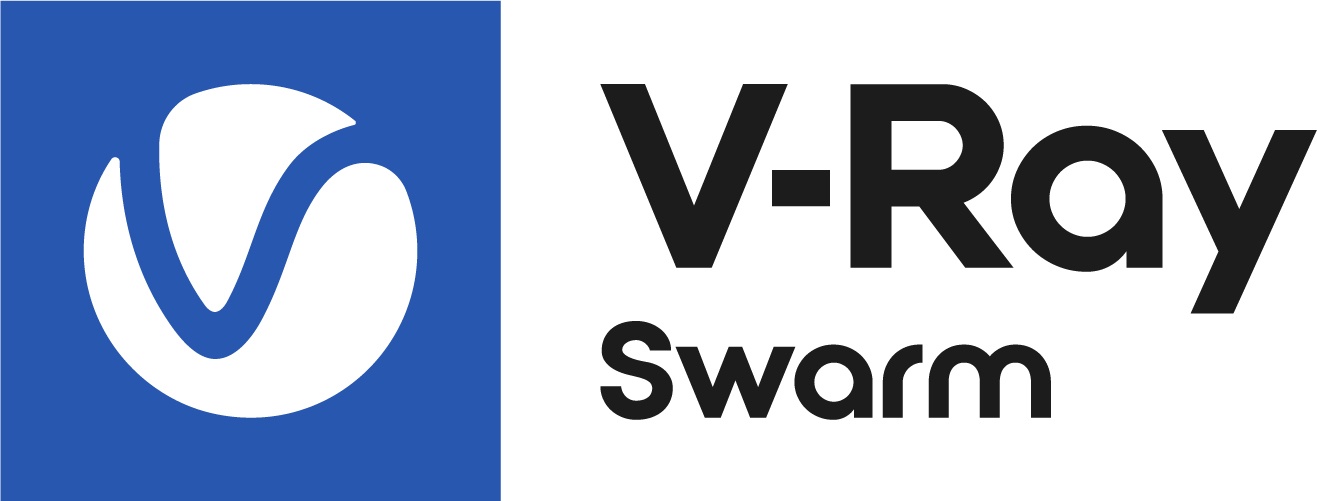This page provides information about distributing V-Ray builds to V-Ray Swarm peers by Script.
Overview
The Script distribution method is performed by the System Administrator or an advanced user. It saves V-Ray versions to <data-directory>/VRay/import/ directory on every peer.
Workflow
- Create a shared directory on your server.
- Put V-Ray distributions there.
- Mount it on all peers.
- Stop Swarm on all peers.
- Change the setting
vrayImportDiron them to point out to the shared directory. - Start Swarms on all peers.
4,5,6 are needed only if your shared directory is not located in <data-directory>/VRay/import/. If this directory contains V-Ray builds for different OSs, only some of them will be successfully deployed. However, deployment attempts will be performed approximately every 10 seconds, which will load a machine. So, the best approach is to create multiple shared directories: one per OS + architecture (for example: Windows_x86/, Windows_Arm64/, Linux_x86/)and to put relevant V-Ray archives/installers there.
This can be done with scripts, for example, with PowerShell or bash or similar. Such script should upload/send V-Ray archive or an installer to a special Swarm endpoint, It is localhost:1113/api/vray/upload where 1113 is the webPort setting and 1113 is its default value. Example for curl:
curl -v -Fqueued=false -F \ file=@$HOME/tmp/vray-lin-df715d3c8ff9.tar\ localhost:1113/api/vray/upload
And the script could do something very similar. From this simple example, it can be seen that there are parameters - queued and file.
So, the API is:
<peer-IP>:<webPort>/api/vray/upload HTTP POST<peer-IP>is the IP of the peer, for the local Swarm localhost can be usedwebPortby default is 1113 if it was not changed in swarm.yaml settings
Parameters of the POST request are:
queuedis a boolean flag, if it isfalse(JSON representation is used), then the uploaded file is processed immediately (synchronous or rapid call). If it istrue, then the uploaded file will be put to<data-directory>/VRay/import/and will be imported little bit later (seeuploadsQueuePeriodSwarm’s setting, by default: 10 seconds)
fileis the uploaded file itself (an archive of supported format or an installer of supported format). Installers by default are not allowed, to allow them, change theallowExecutablesSwarm’s setting.
When a file is uploaded in rapid mode (queuedisfalse):
Wait until the file upload and deployment are completed. When you get the response, it means the V-Ray file was fully deployed (and it is ready to be shared with other peers being saved in the<data-directory>/VRay/import/directory).
Responses can include an error message if V-Ray was not deployed successfully.
If there are failures, the file is removed.
If the operation is successful, V-Ray is deployed/installed, its archive/installer file is in the<data-directory>/VRay/import/ directory.
And if the operation is successful, the response includes a JSON dictionary as follows:
{ "deployedInDirectory": <path>,"uploadedFileSize": <int>,"tmpFile": <path>,"takenSeconds": <int>,"uploadedVrayVersion": <version-dictionary> }When a file is uploaded in queued mode (
queuedistrue):
The uploaded files are saved in the import folder - it is queued.
Wait until the uploading of a file completes, but not the deployment.
You receive a response that the file was queued.
Responses include a JSON dictionary as follows:{ "queuedAs": <path>,"uploadedFileSize": <int>,"tmpFile": <path> }If rapid or queues upload fails, the response includes JSON dictionary such as:
{"message": <str>, "tmpFile": <path>}
If such version already exists (such detection is able only with uploads of archives), the error JSON dictionary inside the larger JSON response is:{ "message": <str>, "tmpFile": <path>,"uploadedVrayVersion": <version-dictionary> }Where <version-dictionary> is a JSON dictionary like:
{ "_revHash": "e8197af2","_ver": {"_major":6,"_minor":20,"_release":10} }.It corresponds to a
<version-str>as6.20.10-e8197af2when it is a part of a file name in<data-directory>/VRay/import/directory.In both bad cases (failure, already existing version) temporary file will be removed and everything will be in a state as before.
So, the whole (large) JSON is:{<tag-str>: <one-of-dictionaries-above>}
where<tag-str>is one of these strings:ExistingUR
such V-Ray version already exists
FailUR
uploading failure
QueuedUR
succeeded uploading in the queued mode
RapidUR
succeeded uploading in the rapid mode
Examples of responses:{ "ExistingUR":{"message":"V-Ray version already exists","tmpFile":"/tmp/servant-multipart106588-2922.buf","uploadedVrayVersion":{"_revHash":"e8197af2","_ver": {"_major":6,"_minor":20,"_release":10} }}}Another one:
{"RapidUR": {"takenSeconds": 6,"tmpFile": "/tmp/servant-multipart106588-2924.buf","uploadedFileSize": 458321016,"deployedInDirectory":"/tmp/VRay/vray-6.20.10-e8197af2","uploadedVrayVersion": {"_revHash": "e8197af2","_ver": {"_major": 6,"_minor": 20,"_release": 10 }}}}<peer-IP>:<webPort>/debug/allowExecutables HTTP GET
- <peer-IP> and webPort are the same as before
This call returns a boolean flag “are executables allowed?”. It can be changed in the swarm.yaml settings (addallowExecutables: true)

